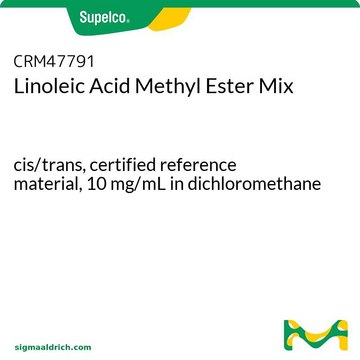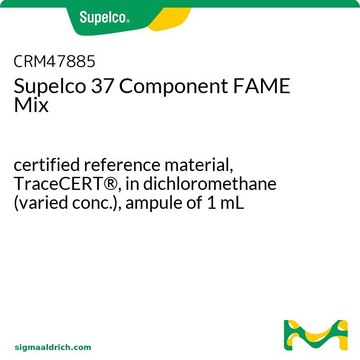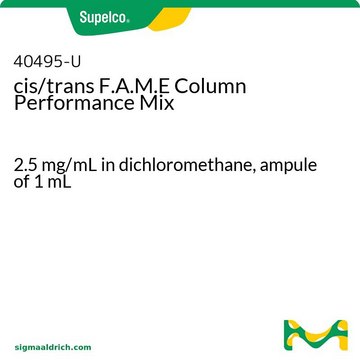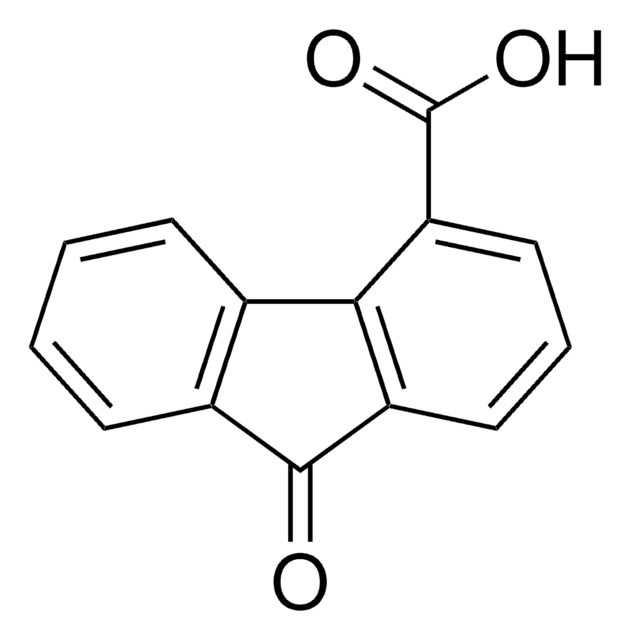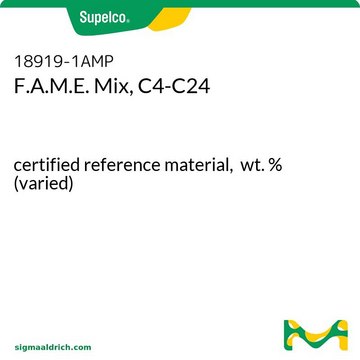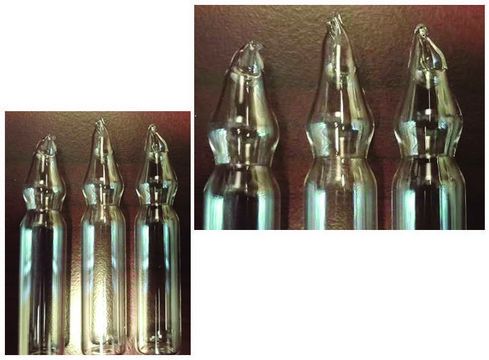47792
Linolenic Acid Methyl Ester Isomer Mix
10 mg/mL in methylene chloride (as total weight), analytical standard
Synonym(s):
Linolenic Acid Methyl Ester solution
About This Item
Recommended Products
grade
analytical standard
form
liquid
packaging
ampule of 1 mL
concentration
10 mg/mL in methylene chloride (as total weight)
technique(s)
HPLC: suitable
gas chromatography (GC): suitable
format
multi-component solution
functional group
ester
storage temp.
−20°C
InChI
1S/C19H32O2/c1-3-4-5-6-7-8-9-10-11-12-13-14-15-16-17-18-19(20)21-2/h4-5,7-8,10-11H,3,6,9,12-18H2,1-2H3/b5-4-,8-7-,11-10-
InChI key
DVWSXZIHSUZZKJ-YSTUJMKBSA-N
General description
Application
Analyte
replaced by
Signal Word
Warning
Hazard Statements
Precautionary Statements
Hazard Classifications
Carc. 2 - Eye Irrit. 2 - Skin Irrit. 2 - STOT SE 3
Target Organs
Central nervous system
WGK
WGK 2
Regulatory Information
Choose from one of the most recent versions:
Already Own This Product?
Find documentation for the products that you have recently purchased in the Document Library.
Our team of scientists has experience in all areas of research including Life Science, Material Science, Chemical Synthesis, Chromatography, Analytical and many others.
Contact Technical Service